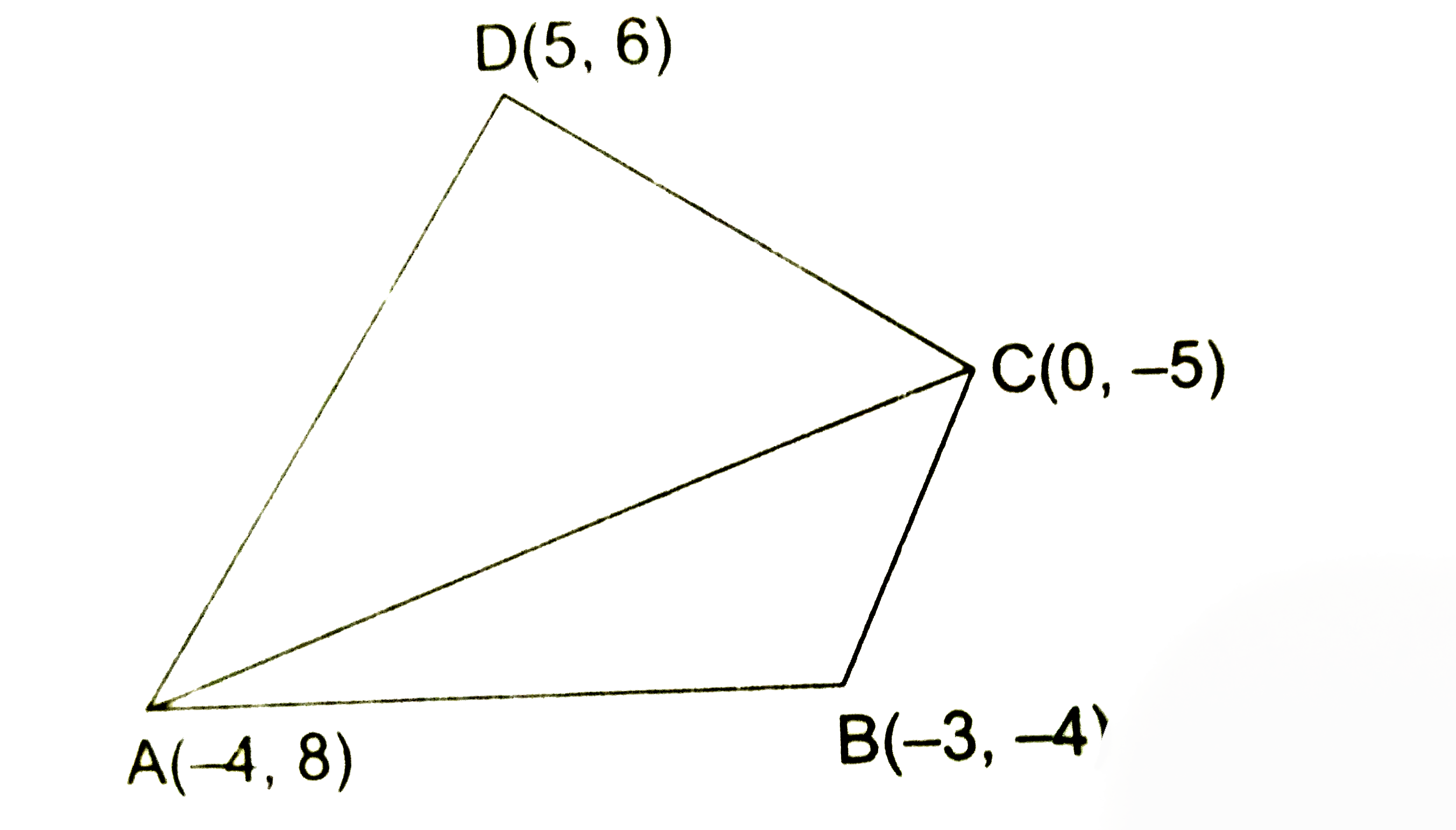Find the area of a quadrilateral ABCD whose vertices are A(-4, 8), B(-3, -4), C(0, -5) and D(5, 6).
Area of quad. ABCD = ar(ΔABC)+ar(ΔACD).

For ΔABC, we have
(x1=−4,y1=8),(x2=−3,y2=−4)and(x3=0,y3=−5)
∴ar(ΔABC)=12|x1(y2−y3)+x2(y3−y1)+x3(y1−y2)|
=12|(−4)⋅(−4+5)+(−3)⋅(−5−8)+0⋅(8+4)|
=12|(−4)×1+(−3)×(−13)+0|
=12|−4+39+0|=352 sq units.
For ΔACD, we have
(x1=−4,y1=8),(x2=0,y2=−5)and(x3=5,y3=6).
∴ar(ΔACD)=12|x1(y2−y3)+x2(y3−y1)+x3(y1−y2)|
=12|(−4)⋅(−5−6)+0⋅(6−8)+5⋅(8+5)|
=12|(−4)×(−11)+0×(−2)+5×13|
=12|44+0+65|=1092 sq unit.
∴ar(quad.ABCD)=ar(ΔABC)+ar(ΔACD)
=(352+1092)sq units=1442 sq units
= 72 sq units.
Hence, the area of the given quadrilateral ABCD is 72 sq units.
Topper's Solved these Questions
- COORDINATE GEOMETRYBOOK - RS AGGARWALCHAPTER - COORDINATE GEOMETRYEXERCISE - Exercise 6A
34 Videos
- COORDINATE GEOMETRYBOOK - RS AGGARWALCHAPTER - COORDINATE GEOMETRYEXERCISE - Exercise 6B
38 Videos
- CONSTRUCTIONSBOOK - RS AGGARWALCHAPTER - CONSTRUCTIONSEXERCISE - Test Yourself
10 Videos
- HEIGHTS AND DISTANCESBOOK - RS AGGARWALCHAPTER - HEIGHTS AND DISTANCESEXERCISE - Multiple Choice Questions (Mcq)
25 Videos
Similar Questions
Find the area of quadrilateral ABCD, whose vertices are A(−4,8),B(−3,−4),C(0,−5)andD(5,6).
View SolutionFind the area of quadrilateral ABCD whose vertices are A(-3, -1), B(-2, -4), C(4, -1) and D(3, 4).
View SolutionFind the are of quadrilateral ABCD whose vertices are A(3, -1), B(9, -5), C(14, 0) and D(9, 19).
View SolutionFind the area of the quadrilateral whose vertices are A(-4,5), B(0,7), C(5,-5) and D(-4,-2).
View SolutionFind the area of the quadrilateral whose vertices are : (−4,5),(0,7),(5,−5)and(−4,−2)
View SolutionFind the area of the quadrilateral ABCD whose vertices are A(1,0),B(5,3),C(2,7) and D(−2,4)
View SolutionFind the area of the quadrilateral whose vertices are A (0, 0), B (6, 0), C (4, 3) and D (0, 3).
View SolutionFind the area of a quadrilateral ABCD having vertices at A(l, 2), B(1, 0), C(4,0) and D(4,4).
View SolutionFind the area of the quadrilateral whose vertices are (−4, −2), (−3, −5), (3, −2), (2, 3)
View SolutionFind the area of the quadrilateral whose vertices are A(1,1),B(3,4),C(5,−2) and D(4,−7)
View Solution
